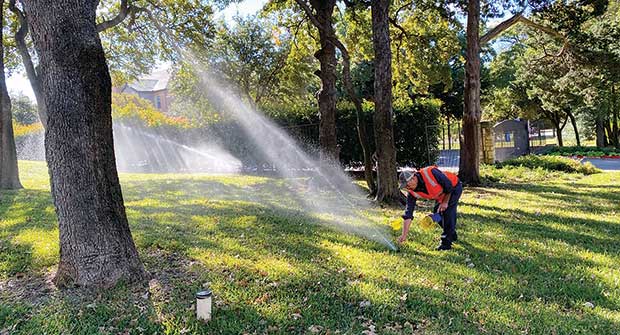Learning the landscape
Company: Calafia Landscape
Founded: 1998
Location: San Jose, Calif.
Service mix: 80% construction, 20% maintenance
Customer mix: 100% commercial
Annual revenue: $3.5 million projected in 2020
Rodger Preston, general manager of Calafia Landscape, explains why education is key to building rapport with employees and clients alike.
When we first started out, we were just doing residential homes. We slowly started getting into the commercial market, probably about 2001, 2002, and got away from residential homes altogether.

At a lot of the commercial properties in California, we’re required to have smart, ET water systems, where it’s solar- or satellite-based type of controllers. We would take the grass out, convert them over to drip lines and do plantings.
We always read our water meters every week to make sure our usage is staying in line with seasonal averages. If there’s a spike, then we go and investigate
to try to find out why there was a spike in case there’s a main line break or the system is programmed too much for that time frame.
Early on, they didn’t have a lot of the technology that we have now. Twenty years ago, you were trying to look at the systems and say, ‘This area is too wet or too dry based on moisture in the ground,’ and then you’d program the clock accordingly. Now, we have moisture sensors that tell you’re using too much water.
We also get recommendations from the architect when they design the systems, how much water usage we should be initially having based on their recommendations, and we use those as our starting point.
A lot of the manufacturers offer classes for the techs. Rain Bird is a good example. Then also, with the reclaimed water systems we have out here, especially in the Bay area, a lot of municipalities offer classes for us to go to as far as installing the reclaimed water systems properly and where the water comes from.
Reclaimed water is quite big out here, and it’s a lot cheaper. We learn about how they want to manage some of those systems on their properties around these towns.
We send our crew members to these classes for education, rather than just hire somebody off the street and say, ‘hey, go push the lawn or fix the sprinkler.’ We don’t want just anybody who doesn’t really understand what their overall goal is out there trying to fix something. We want to try to conserve water and bring costs down for the customer.
The customers enjoy hearing that we’re engaged in sending these people to learn about new controllers and learn about new policies from the municipalities. They see that we’re really involved in their property and trying to save them money versus just trying to service them and move on.
Crew members love it, too. They want to move up the chain and get more experience. We try to treat them right and keep them around, and we do. The economy’s good, they’re working hard, and they’re busy.


